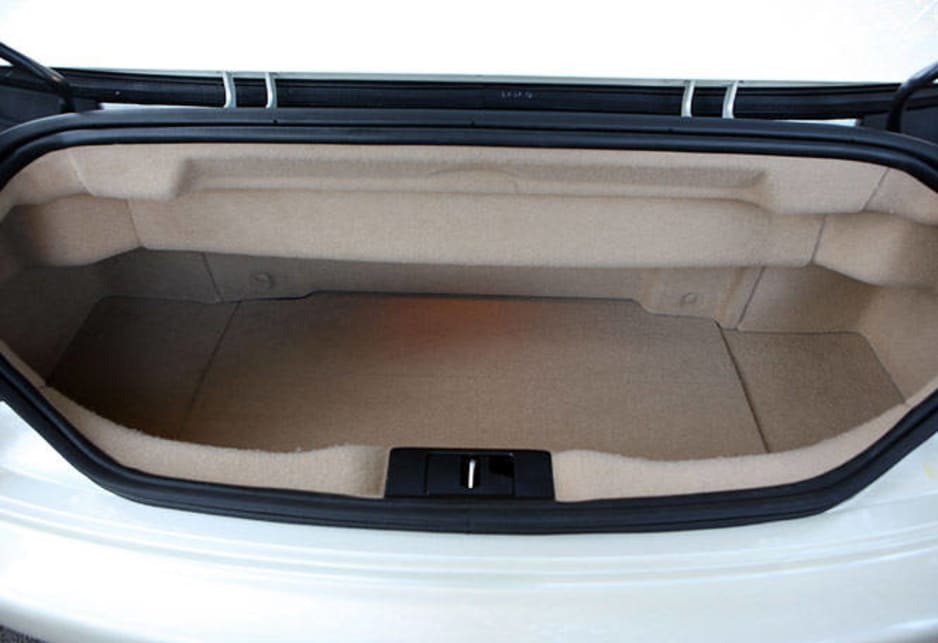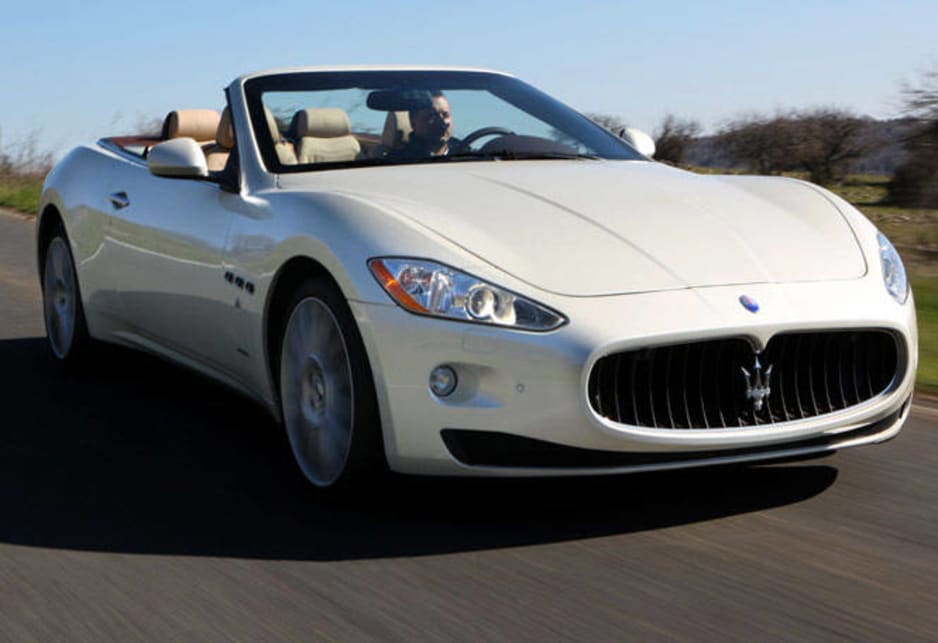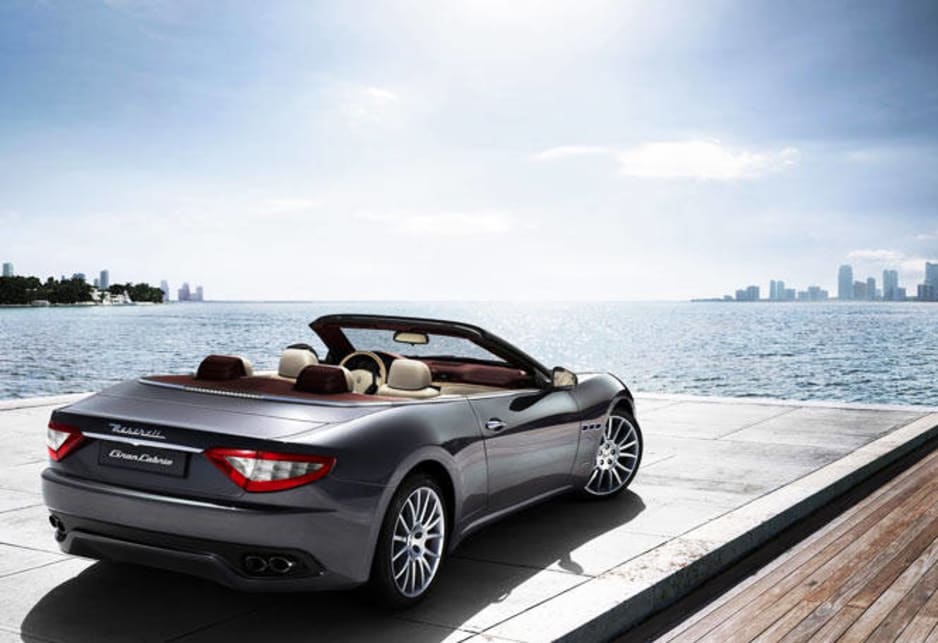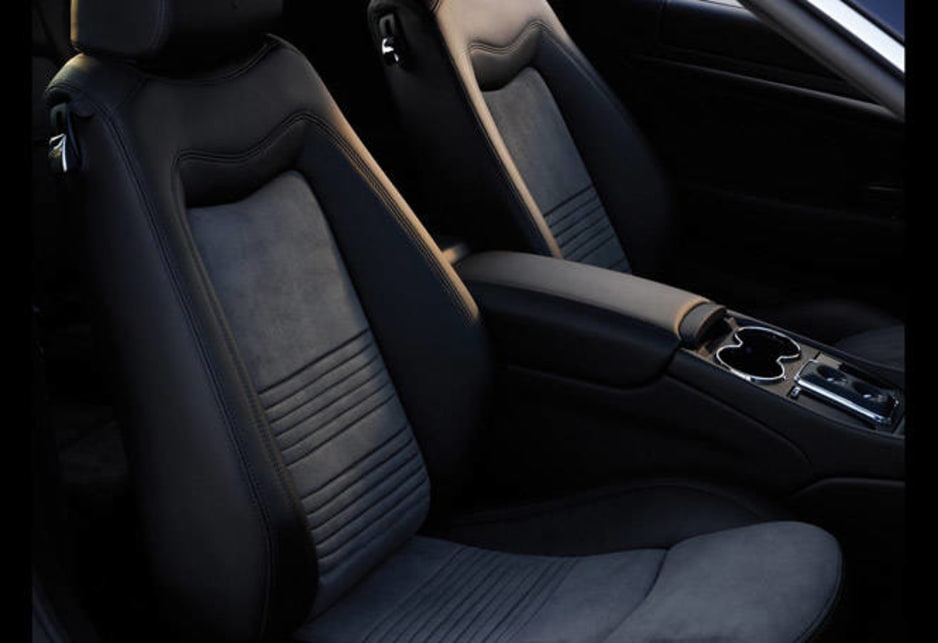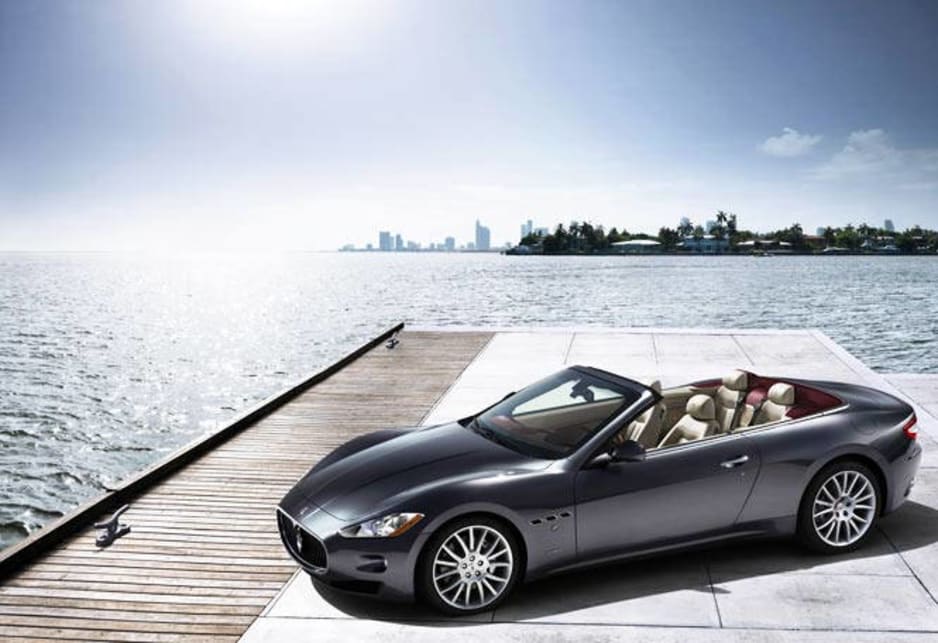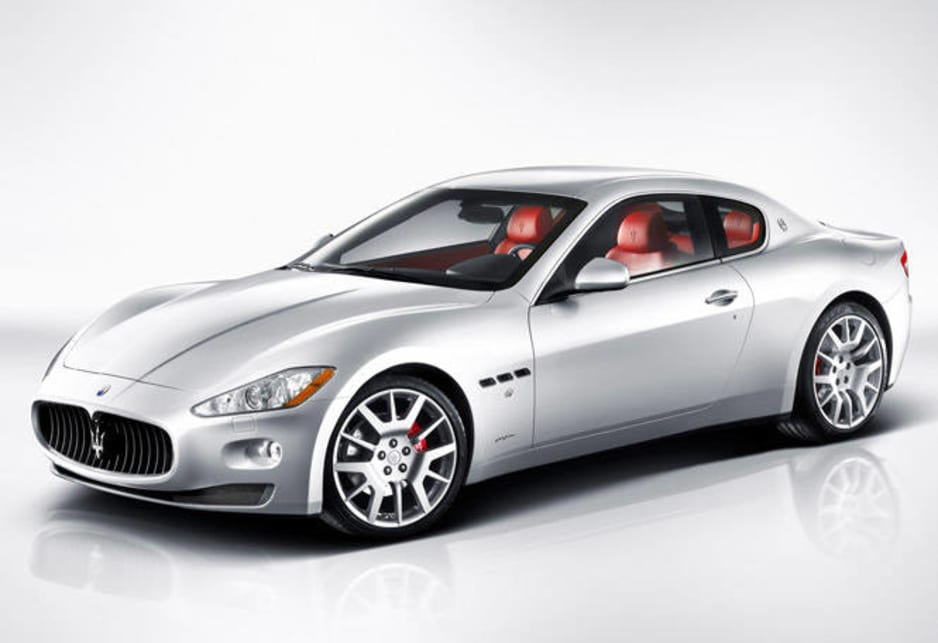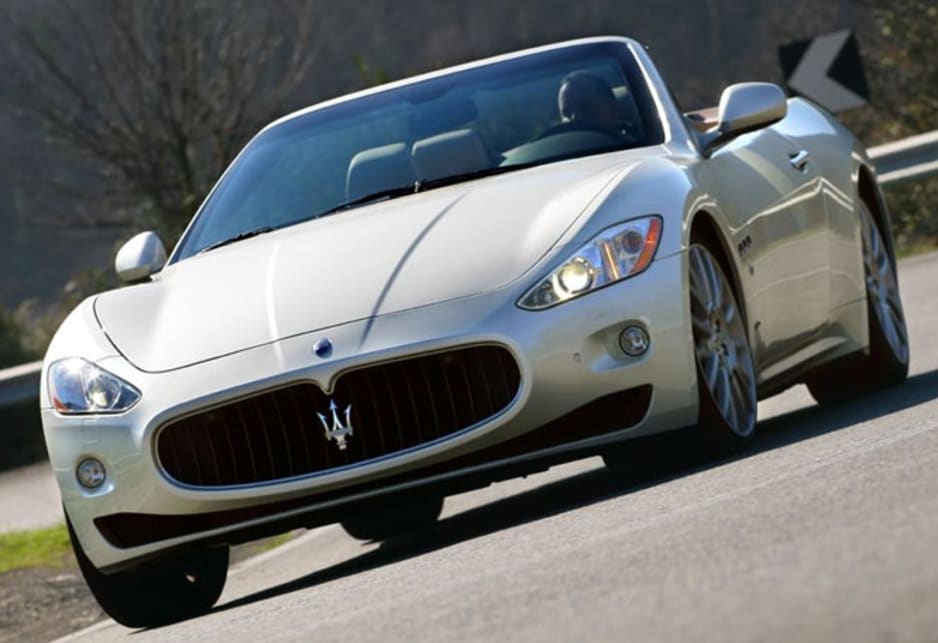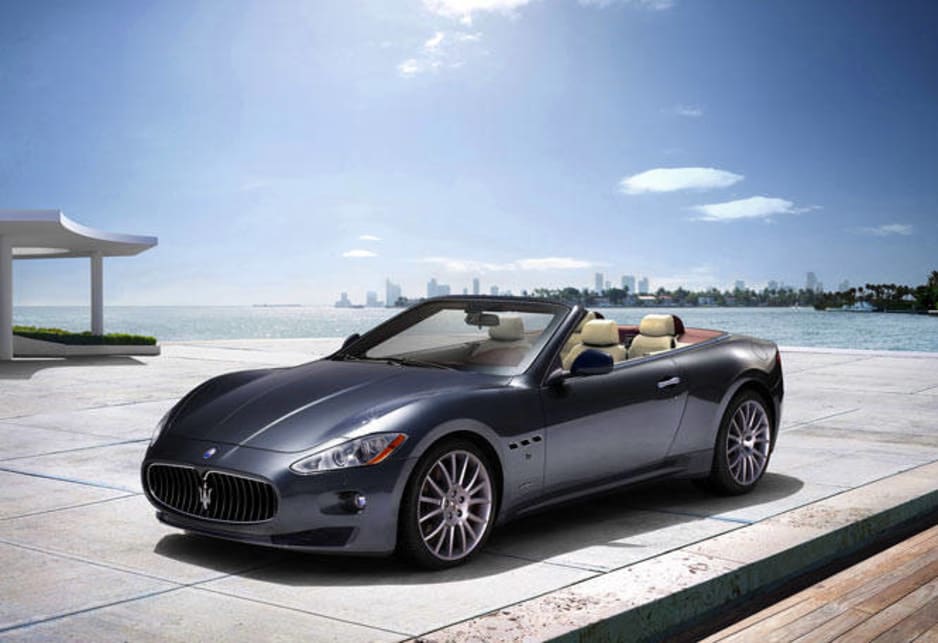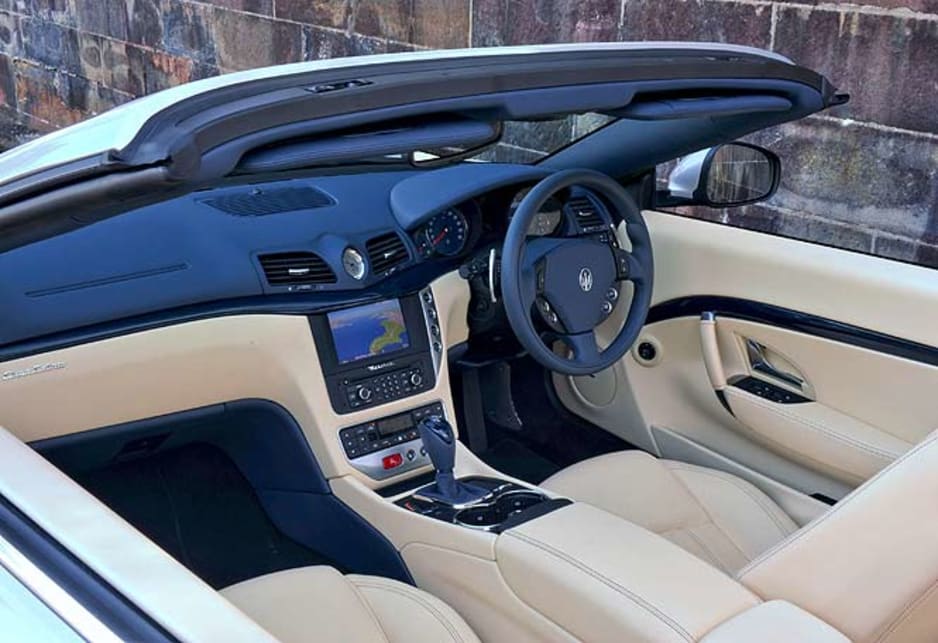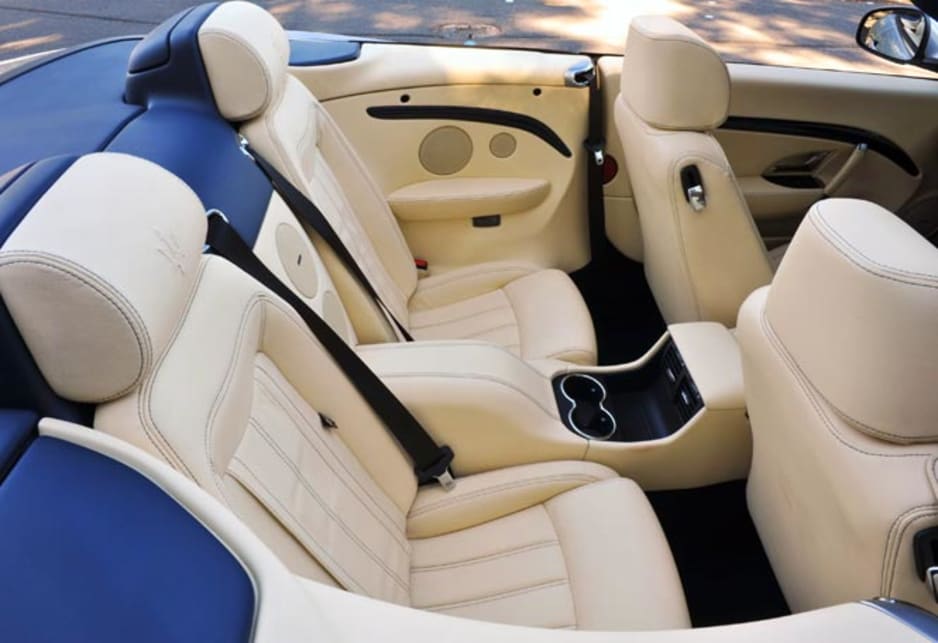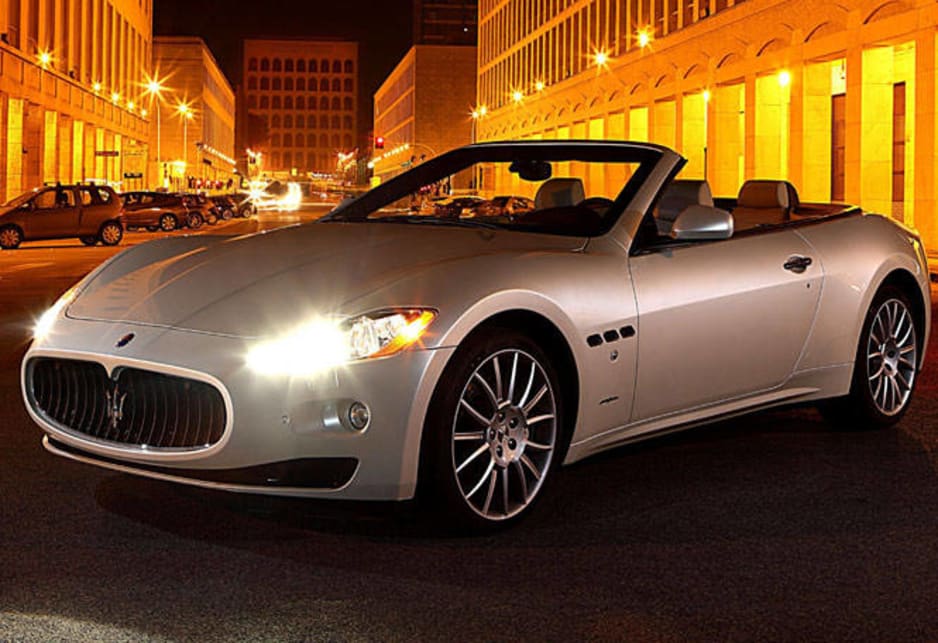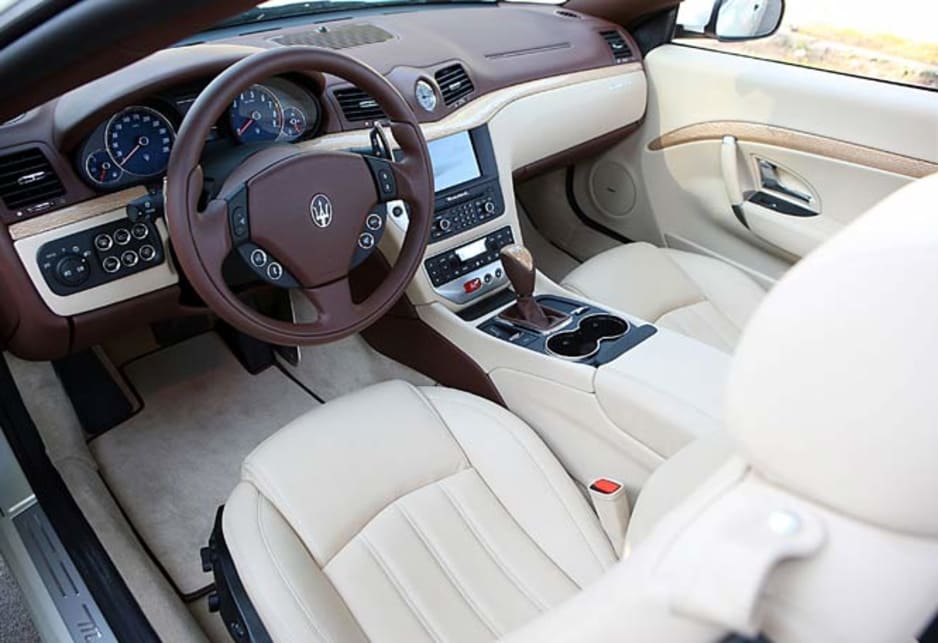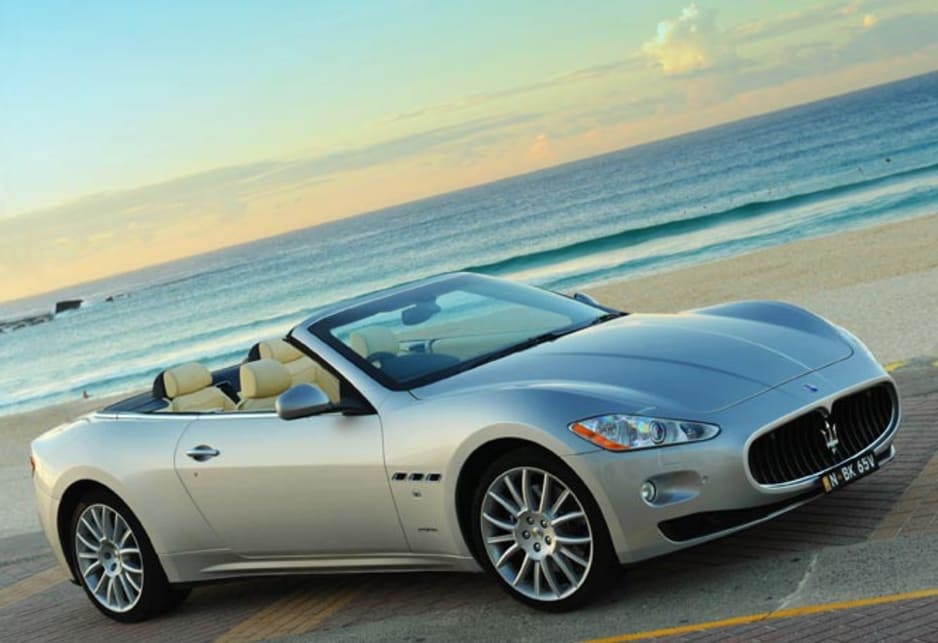
Maserati GranCabrio 2011 Review
- Maserati GranCabrio
- Maserati Grancabrio 2011
- Maserati GranCabrio Reviews
- Maserati Reviews
- Maserati Convertible Range
- Convertible
- Maserati
- Prestige & Luxury Cars
HOW do luxury brands survive a downturn as severe as the GFC? For some, the global appetite for their models was cut in half and that's the sort of diet that could imperil any manufacturing operation, let alone one with biblically long lead times, the overheads of a small nation and customers it knows by name.
So far, though, the casualties have all been bread-and-butter brands. They include Pontiac, which was GM's blue singlet badge, and Saturn, which was its attempt to repel the Japanese small car invasion.
All told, the clean-out at GM cut its portfolio from eight badges to four, but the sweepers have been much less vigorous in Europe. The closest thing to a fatality has been GM cast-off Saab, whose heart stopped beating long enough for it to sustain permanent damage. It remains to be seen if tiny, independent Dutch sportscar maker Spyker can supply enough voltage to keep Saab on life support.
Most luxury brands enjoy more shelter than that, under the aegis of global car groups with the resources to ride out a storm. Volkswagen has a handful of trumps with Bugatti, Bentley, Lamborghini, Porsche and Audi. It's unlikely to let any of these perish just because of a recession or two.
The Fiat group, meanwhile, has the same number of brands as pre-bankruptcy GM, including three among the premium ranks. For Fiat, relinquishing either Ferrari or Maserati would be like losing an arm, and it's going into overdrive to keep a pulse going at Alfa Romeo.
But there's more to it than that. The further up the luxury scale you go, the more the GFC was a case of “let me eat cake''. At the super-rich end of the market, Rolls-Royce and Ferrari sales suffered comparatively slightly -- down 17 per cent and 6 per cent respectively.
Even allowing for the long waiting lists at this level, which provide a cushion against economic swings, the difference between Ferrari and brands just one rung below on the price ladder is marked. Aston Martin, Bentley and Maserati all slipped 40 per cent or more last year -- 49 per cent in the case of Maserati.
Within the Fiat group, Maserati comes a distinct second to Ferrari in the brand hierarchy although it benefits from the association by, for example, running Prancing Horse engines in its cars. No small part of the appeal of Maseratis is that they dance to an eight-cylinder Ferrari tune.
But there's a price to be paid. Since becoming part of Fiat, Maserati has also had to learn not to tread on Ferrari's feet. It must make models that complement what Ferrari is doing, rather than compete. To achieve this, the Trident badge has had to abandon some of its historic sporting aspirations and target buyers who want their luxury wheels to have as much elegance and practicality as pace. If Ferrari is a bullet-train, Maserati has to be the Orient Express.
With the launch of the Maserati GranCabrio last week, this two-brand jigsaw puzzle is finished -- for the time being, at least. This convertible completes a three-model line-up for Maserati that includes the Quattroporte sedan and GranTurismo coupe, and nearly a decade of brand realignment. Its next model will be a mid-size sedan due in three years, and Ferrari definitely won't be making one of those.
Maserati believes the GranCabrio will attract new customers and it will need to, because it has never made anything like this before. It built smaller and racier two-seat convertibles in the past -- the last was the Gransport Spyder, discontinued four years ago -- but not any more. That's Ferrari territory.
Like its siblings, the GranCabrio is a large car -- longer than any rival, apparently -- with the clear goal of providing four open-air seats that can all accommodate adults. Here it succeeds, although it's as well to remember that when a carmaker describes a convertible as a full four-seater, it's using a different system of measurement from the one it applies to sedans.
If there's a practical downside to the GranCabrio it's the boot, which is tiny. Maserati says it can swallow a set of golf clubs but, just in case, offers a bespoke set of luggage that fits perfectly . . . on the rear seats.
A key part of the appeal of any convertible is the way it presents with the roof down, and the GranCabrio cabin is suitably plush, if a little traditional. Maserati says the leather and trims on offer mean there are nine million possible combinations for the finished result, although I suspect that 8.9 million of these would be indictable crimes against good taste.
One small drawback for Australian buyers are zipped panels in the rear seats necessitated by the child seat fittings mandated in this market. The front seats power-slide forward to allow access to the rear, although the glacial rate at which they move would test anybody's patience. The roof folds more quickly.
The GranCabrio, like most convertibles, needed engineering changes from the GranTurismo coupe to prevent it driving like a shoebox without a lid. Extra-thick widescreen pillars are one result while, with the roof up, the high rear window offers an excellent view of traffic about half a kilometre behind.
Drivers will find the same scattergun logic to button placement as other Maseratis while the control screen, with its foggy logic and even foggier graphics, was clearly inspired by late-70s Nintendos.
In terms of its overall shape, the GranCabrio is almost identical to the lovely Coke-bottle-on-steriods design of the GranTurismo coupe and it avoids some of the pitfalls of convertibles, such as an overly tall tail. It's a glamorous beast that draws plenty of stares.
The roof is almost as thick as a fold-out mattress and offers good insulation against noise by convertible standards, with engine sound dominating. That's as it should be in a car like this -- and it gets even better with the roof down, when the 4.7-litre Ferrari V8 can show off its full vocal range. It whumps on downchanges and crackles on overrun while pushing it through to the 7200rpm redline is a sonic -- as well as dynamic -- thrill.
The six-speed automatic is the right sort of transmission for this sort of car, but it could do with a little more finesse in its programming. It doesn't always make the right moves and reverts too quickly to D when the paddles are being used by the driver. Maserati will replace this unit with an eight-speeder in its next Quattroporte, which means if you can wait long enough it will be offered in this car, too.
On the twisting roads of northern NSW last week, I used those paddles a lot. Sometimes just for the fun of it. There's a world of difference between this two-tonne look-at-me-mobile and a Ferrari, but some solid work on the chassis means it's possible to get plenty of enjoyment from the engine.
It's certainly no slouch, stopping the clock at 5.3 seconds to 100km/h, and the car feels balanced with unwanted body movements kept well in check. So much so that through corners, some of the mass evaporates and it only betrays its true heft under brakes.
The controls lack the precision of a dedicated sportscar but they get better as speed rises, when the lazy feel to the steering disappears. Keeping this much open-top metal on a tight rein requires fairly stiff suspension, which means chassis nuances are a bit remote, but not absent. Worse, the ride can feel too detailed and brittle on rough country roads, with shudders travelling right through the cabin to the rear-view mirror.
That's a flaw that will be familiar to most convertible owners and Maserati's claims that the GranCabrio is as rigid as the best sound plausible, at least. The convertible owners who currently drive a BMW 6 Series, Mercedes-Benz SL or Porsche 911 are precisely the ones Maserati believes it can lure to the brand.
It's hard to argue with the endless delights of a Ferrari engine at Maserati prices while it's impossible to argue with the brand's assertions of exclusivity. Last year, with 4489 buyers, it was about 2000 units more exclusive than Ferrari itself -- and 49 per cent more exclusive than it was the year before. Fiat is unlikely to let a brand with those sort of credentials expire.
MASERATI GRANCABRIO - $338,000 plus on-road costs
Vehicle Four-seat convertible
Engine: 4.7-litre V8
Outputs: 323kW at 7000rpm and 490Nm at 4750rpm
Transmission: Six-speed automatic, rear-wheel drive
Pricing guides
Range and Specs
| Vehicle | Specs | Price* | |
|---|---|---|---|
| (base) | 4.7L, PULP, 6 SP AUTO | $84,810 – 97,460 | 2011 Maserati Grancabrio 2011 (base) Pricing and Specs |
$84,810
Lowest price, based on third party pricing data


